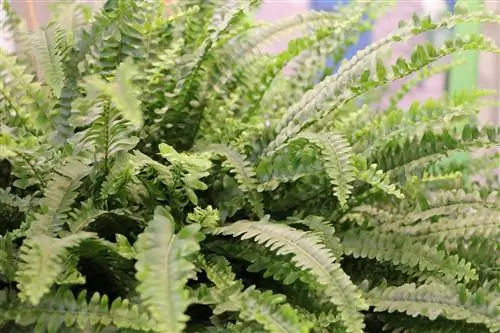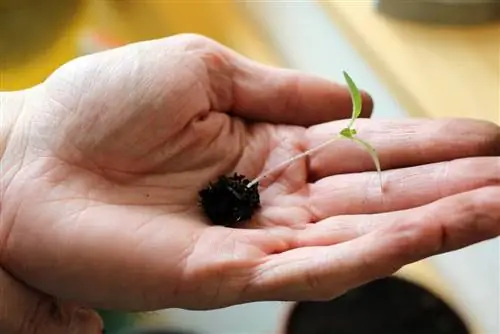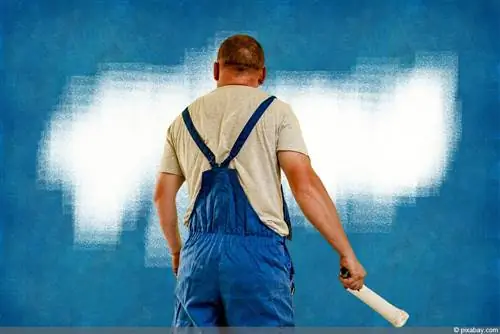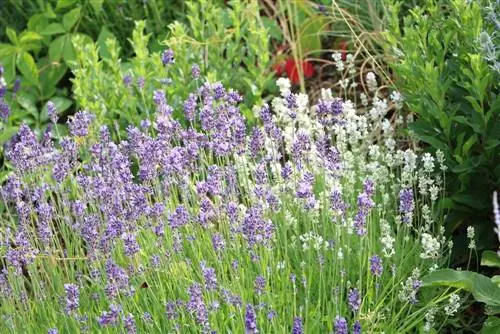- Author admin [email protected].
- Public 2023-12-17 03:39.
- Last modified 2025-01-24 12:45.
If you decorate your apartment and home with houseplants, you bring a piece of nature into your home. This could be a small cactus that blooms beautifully or a beautiful yucca palm that adorns a bare corner. Potted plants can find their place in every corner, on the windowsill or on the table.
Houseplants are an attractive eye-catcher for the home
When the eye falls on a houseplant that is in beautiful bloom or that makes a corner particularly attractive, then we feel good. There was once a time when houseplants were despised, but today they are the focal point of every home. Giving in to the desire for houseplants goes hand in hand with the question of which plants you should bring into your apartment. For example, if you have an apartment that faces north or is in the basement, you should not put plants that like it sunny. It's not just the location that matters, but also the care. For example, if you're not at home all week, plants that need to be watered every day are out of the question. But that's not all that matters.
Very important:
If there are animals in the household, especially cats, they like to grab plants and eat them. You should also make sure that the flowers are not poisonous.
The right plants and the right place
Plants that require little light should be placed in the north window. There are plants that like this location best. Of course, these plants need to be cared for differently than houseplants that like the sun. There are small houseplants for the north window, for example the room ivy, begonia species, the harp bush or the hen. The flamingo flower and the African violet also like it dark, but still want some sun every now and then. In addition, the purple tute, the dragon tree, the room fern or the dwarf pepper are ideal flowers that prefer dark rooms.
In an apartment there are actually more shadows than light. There are also houseplants for this region of the home. Plants for indoors and for partial shade, including the Dieffenbachia, it is an evergreen plant and has decorative leaves. Every place where the plant stands is an eye-catcher. Some ferns, such as Phyllits, also like a semi-shady place and prefer the bathroom because there is a high level of humidity there. If you want to hang a hanging basket, the gunner flower with its different leaves is an attractive eye-catcher. A ledge, the perennial grade, the rotating fruit, which has wonderful colors, or the lucky feather, which are actually easy to care for and suitable for beginners.
Tip:
Diseases in houseplants! You should also check the plants that are inside for disease pests. If a plant is ailing, it could be pests, but also a lack of nutrients.
Plants from the Araceae family are poisonous to pets:
- Window leaf (Monstera deliciosa)
- Single leaf (Spathiphyllum)
- Evy plant (Sindapsus pictus)
- Tree friend (Philodendron scandens)
- Philodendron species
The following plants are suitable for the bathroom:
- Flaming Sword, Guzmania or Cyprus Grass
- Ferns also love high humidity
- Bromeliads
- Maranthe, African violets and orchids
The right location
If you always think about your plants, how they are in nature and what living conditions they have there, you will find the right location. If you think about the fact that all plants need light, sometimes more or less, you know that plants in a dark stairwell have no chance of survival. There are certainly areas in an apartment that are quite dark. Hallways, bathrooms with no window or a tiny one. Corners in large rooms are also dark. They are often not attractive, but they don't have to be. Because there are houseplants for the dark area for these areas too. You should know that green plants are more likely to thrive in the shade than flowering plants. The plants in the shade usually don't grow particularly lush.
Plants that love shade:
- Philodendron
- Sword fern
- Single sheet
- Zamie
- window leaf
Caring for houseplants
Every plant has different needs and must be cared for differently. However, there are a few basic things: Every plant needs light, some more and others less. This means that there are plants that love full sun and plants that thrive in partial shade or shade. Nevertheless, they also need light so that photosynthesis can work. Every houseplant needs water. There are differences there too. One plant loves moisture, the other only needs watering once a month. The application of fertilizer is also different and should be tailored to each plant. You should also remember that plants that have felt comfortable on the windowsill all year round turn brown and die in winter. The reason can be found in the heating air; they cannot tolerate the heat or they need more water. If you really want to do something good for your plants, you should put them in a winter quarter that is cool and darker.
Repotting plants
If you love your plants, you adapt to their needs. Watering plays a role, as does fertilizing or repotting. Especially when the plants have become too large, they should be repotted. It is important to ensure that you do not repot during the growth phase. The best time is in winter or after the season in autumn. When repotting, as much old soil as possible should be removed. This gives you the guarantee that no possible pathogens will move into the new pot. After repotting, water well and place the plant in its usual place.
Pests on houseplants
Many people think that houseplants are not attacked by pests as often as plants that are outside. But that is not the case. It's also worth taking a look at houseplants every now and then to remove any pests in good time and not just when the plant dies.
Consider resting time and growth
If you want to enjoy beautifully flowering plants, you should pay attention to the rest period and growth of houseplants. Usually it's not a problem if you just pay attention to a few little things. If the plant is growing, it needs a lot of light and water and should also be fertilized regularly. This is the only way to turn a simple plant into a flowering miracle. The same applies here: the plant should be in its correct location. There is also a rest period during which the plants regenerate. Some do not change, others lose their leaves. There should be no panic here, because it is a protective function of the plant. During the rest period you should not fertilize, just give a little water every now and then.
What you need to know about plants for dark rooms
- Most plants need a lot of light. They grow best near a window or under artificial plant light.
- The minimum light a plant needs to live is 700 to 1000 lux.
- Most plants only begin to thrive at around 10,000 lux.
- On cloudy winter days, the light intensity can be between 400 and 500 lux, which is very little.
- On a sunny summer day it is up to 90,000 lux instead. That makes the difference.
What you should also keep in mind is that if you place the plant about a meter away from the window, you are already depriving it of 20 to 50 percent of the light intensity. Not many plants can tolerate this. But there are also some that do quite well with little light:
- Green lilies, for example, don't need a lot of light. However, their color often fades and the interesting stripe coloring is no longer so clearly visible.
- The one-sheet is also quite adaptable in terms of lighting conditions. It gets by with very little light and is therefore very frugal.
- Cushion, alocasia and xanthosoma prefer shade to partial shade.
Some ferns also get along with relatively little light, but they shouldn't be too dark. They include lady fern, leather fern, nest fern, rib fern, sword fern, deer's tongue fern and sickle fern. A classic, easy to care for and happy with little light is Zamioculcas zamiifolia, also called cardboard paper palm or tropical arum, an arum plant. Although we have only been cultivating it for about 10 years, it is very popular and can be found in many households. Although she actually likes a lot of light, she can also cope with little. It also requires little water and care.
- The cobbler palm (Aspidistra) is just as easy to care for. It's not pretty, but if you make it bloom, it looks pretty good.
- Ivy is also a very undemanding plant. There are many different varieties that can be planted together. This gives an interesting effect.
No matter what plant, none can survive without light. If there is not enough, a plant light is recommended.






